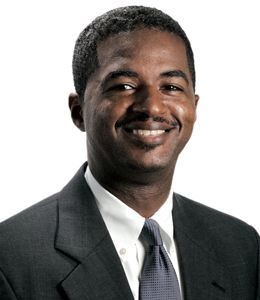Where is the Love? Leading transformational change, beyond information and technology
CompetencyWorks Blog

Last December I was at a conference sponsored by the Maine Principals Association and the keynote speaker was Dr. Anthony Muhammad. The topic was building and changing your school culture. As I listened to his presentation, I realized that when building leadership capacity for transformative change, two variables must be acknowledged to better identify and mobilize the ideas and people who are a part of the change process.
First, the technical changes that occur become the tools and structures for learning. Second are the “cultural” pieces, our beliefs, practices, behaviors and norms within and across the organization. Philip Schlechty offers this perspective of the interplay between structure and culture: “Structural change that is not supported by cultural change will eventually be overwhelmed by the culture, for it is in the culture that any organization finds meaning and stability.”
This is where many school officials and reformers fear to tread, but it is the place that holds the biggest keys to unlocking the potential for real change in our schools.
It reminds me of a staff meeting that I had as we began to really push ourselves and our thinking around teaching and learning. I placed a statement on the wall, “All students can meet high standards regardless of their home situation or the teacher they are assigned.” Needless to say, we had a very powerful conversation that afternoon. This is where we pushed our shared vision of all learners into a covenant of collective responsibility. We had adopted a set of values that supported professional development, a sense of responsibility for student learning, and a positive, caring atmosphere. The old model of compliance was being dismantled, as opportunities to enter the realm of collaboration, support and transparency increased. How was this different than before? We had PLCs, staff led committees, and individual goal-setting.
Well, truth be told, we had an unwritten contract which assumed control of curriculum, instruction and establishing a criteria for student success to be solely in the hands of the teachers. If teachers did not want to truly collaborate, that was fine. If students did not comply, they were removed. I am not proud of these agreements, but I share them to offer an example of technical change without cultural change. During this time, we had instituted a number of technical components: Response to Intervention, Positive Behavioral Supports and Interventions, New Math and ELA curriculum, as well as technology.
Dr. Muhammad states, “When human beings are at their best, they are thoughtful, ethical, productive, and humane, and quality education can produce all of these attributes. My greatest hope is that educators grasp this concept and universally dedicate themselves to creating schools that provide adequate guidance and support for all kids, and that they aspire to become the transformational institutions that make the community a better place to live in and our world a better place.”
Dr. Muhammad sheds new light on the diverse issues of resistant staff, with an emphasis on developing a cohesive, positive culture.
In his book Transforming School Culture, he identifies the what, who and how of organizational culture, analyzing human motivation and the dynamics of human relationships.
To change the culture he offers these steps:
• Develop a systematic and school wide focus on learning.
• Celebrate the success of all stakeholders.
• Create systems of support.
• Leaders need to create conditions to motivate people to change.
One of my favorite quotes is from Jim Collins: “Get the right people on the bus and sit them in the right seats.”
Daniel Joseph is an Education Specialist with the Reinventing Schools Coalition (RISC) and an educational leader in the State of Maine. He has worked with his local school district, the State Department of Education, and a variety of other partnerships to transform the educational system. You can read a full biography here.